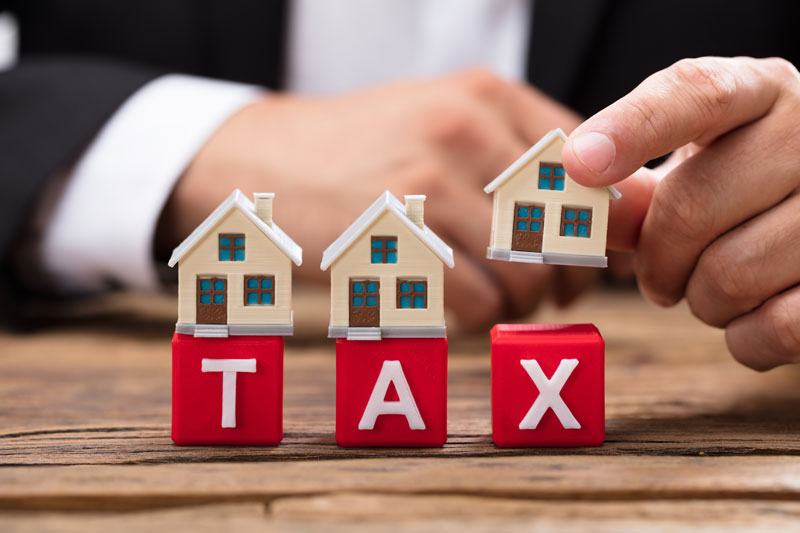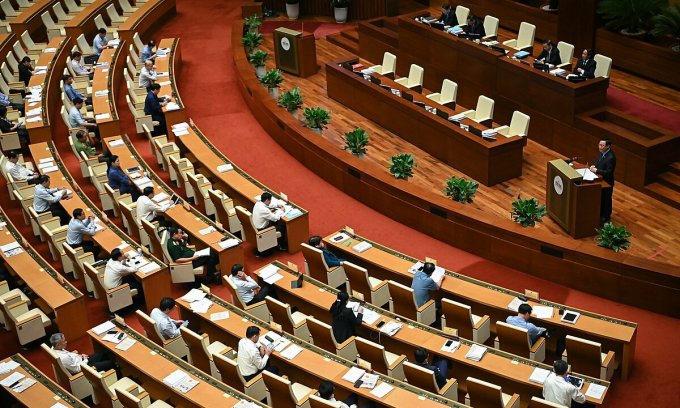When to pay land use tax according to Vietnamese regulations?

Land is a special asset, an invaluable resource that brings economic, social and cultural values. According to regulations, land belongs to the entire people and is managed by the State; In addition to enjoying certain rights on land, citizens also have to fulfill certain obligations. So, When to pay land use tax according to Vietnamese regulations? How to calculate land use tax? Let’s find out with Lawyer X the regulations on this issue in the content of the article below. Hope this article brings a lot of useful things to you.
Legal grounds
Land Law 2013
Decree 45/2014/ND – CP
How are land use tax and land use levy understood?
Land use levy is understood as the amount of money a land user pays to the State when the State allocates land and collects land use levy, permits the change of land use purpose, and recognizes land use rights.
Land use tax is a tax that land users must pay to the State every year. Land use tax includes agricultural land use tax and non-agricultural land use tax.
When do I have to pay land use tax?
Land use tax includes non-agricultural use tax and agricultural land use tax.
Non-agricultural land use tax
Non-agricultural land use tax payers
Article 3 of Circular 153/2011/TT-BTC stipulates that taxpayers using non-agricultural land include:
Taxpayers being organizations, households or individuals have the right to use land subject to tax in the following cases:
Residential land in rural areas, residential land in urban areas.
Non-agricultural production and business land.
Non-agricultural land that is not subject to tax such as land used for public purposes, land for cemeteries, graveyards, etc., is used by organizations, households and individuals for business purposes.
Organizations, households and individuals that have not yet been granted certificates of land use rights and ownership of houses and other land-attached assets, the current land users are taxpayers.
Taxpayers in some specific cases are prescribed as follows:
In case the State allocates or leases land to implement an investment project, the person to whom the State allocates or leases land is the taxpayer.
If the person with the land use right leases land under the contract, the taxpayer shall be determined according to the agreement in the contract. If there is no agreement on taxpayers in the contract, the person with the right to use the land is the taxpayer.
In case the land has been granted a certificate but there is a dispute, before the dispute is resolved, the current land user is the tax payer. Tax payment is not a basis for settling disputes over land use rights.
If more than one person has the same right to use a land plot, the taxpayer is the legal representative of the people who have the same right to use that land parcel.
In case the land use right holder contributes business capital with the land use right and forms a new legal entity with the right to use land subject to non-agricultural land use tax, the new legal entity is the taxpayer.
When renting a state-owned house, the taxpayer is the lessor (the unit assigned to sign a contract with the tenant).
In case of being allocated or leased land by the State for the implementation of a project to build houses for sale or lease, the taxpayer is the person who is allocated or leased land by the State. In case of transferring land use rights to other organizations or individuals, the taxpayer is the transferee.
How to calculate non-agricultural land use tax
Non-agricultural land use tax payable = Tax amount incurred – Tax exempted or reduced (if any)
In there:
Amount of tax incurred = (Taxed land area x Price of 01m2) x Tax rate
Although the formula is quite complicated, in fact, the non-agricultural land use tax that households and individuals have to pay annually ranges from 100,000 to 300,000 VND.
Tax on agricultural land use
Taxpayers of agricultural land use
Pursuant to Article 1 of Decree 74-CP stipulating that organizations and individuals that use land for agricultural production are obliged to pay agricultural land use tax, including:
– Farming households, private households and individuals.
Organizations and individuals using agricultural land belonging to the land fund for public needs of the commune.
Agricultural, forestry and fishery enterprises, including farms, forestry farms, factories, camps and other enterprises, state agencies, non-business units, armed forces units, and organizations society and other entities using land for agricultural, forestry and aquaculture production.
Objects exempt from agricultural land use tax
Users of agricultural land for research and trial production; the area of land for growing annual crops with at least one rice crop in a year; salt land.
Tax-exempt area: The entire agricultural land area for research and trial production; the area of land for growing annual crops with at least one rice crop in a year; salt land.
The area of land for annual crops with at least one rice crop in a year includes the planned land area, the plan to grow at least one rice crop in a year, or the land area with annual cropping planning and plans but actually economy grows at least one rice crop a year.
– Poor households are allocated or recognized agricultural land.
Exemption period: Until the end of December 31, 2025 (according to Resolution 107/2020/QH14).
Formula for calculating residential land use tax
According to the provisions of Clause 2, Article 8 of Circular 153/2011/TT-BTC, residential land use tax is determined according to the following formula:
Amount of tax payable (VND) = Amount of tax incurred (VND) – Amount of tax exempted or reduced (if any)
In there,
Amount of tax incurred = Taxable land area x Price of 1m2 of land (VND/m2) x Tax rate %
Accordingly, to calculate the amount of tax incurred, it is necessary to know three factors: Taxable land area, price of 1m2 of land and tax rate.
Taxable residential land area
Taxable residential land area includes residential land used for business purposes.
– Case 1: A taxpayer has many residential land plots within a province, the taxable land area is the total area of taxable residential land plots in the province.
– Case 2: If the land has been granted a Red Book, the taxable land area is the area recorded in the Red Book; In case the residential land area recorded in the Red Book is smaller than the actually used land area, the taxable land area is the actually used area.
– Case 3: Many organizations, households and individuals use the same land parcel without being granted a Red Book, the taxable land area for each taxpayer is the actual used land area of each taxpayer. that taxpayer.
- In case many organizations, households and individuals use the same land plot, which has been issued with a Red Book, the taxable land area is the land area recorded in the Red Book.
Price of 1 m2 of residential land taxable
The price of 1 m2 of taxable land is the land price according to the purpose of use of the taxable land plot set by the provincial People’s Committee and is stable over a 5-year cycle, from January 1, 2012.
Note:
- In a 5-year cycle, there is a change in taxpayers (for example, purchase, sale, donation) or factors arise that change the price of 1m2 of taxable land. remaining period of the cycle.
- In case of land allocation, land lease by the State, change of land use purpose from agricultural land to non-agricultural land or from non-agricultural production and business land to residential land in a stable cycle, the price of 1m2 of taxable land is the land price according to the use purpose set by the Provincial People’s Committee at the time of land allocation, land lease or change of land use purpose and is stable for the rest of the cycle.
- In case the land is not used for the right purpose or encroached or occupied, the price of 1m2 for tax calculation is the price of land according to the current use purpose prescribed by the provincial People’s Committee and applied in the locality.
- In case the provincial People’s Committee has specified the method of determining the land price as a basis for tax calculation for the land plot located in different locations, the regulations of the provincial People’s Committee shall be followed.
Tax
For residential land (including the case of business use subject to the partially progressive tax schedule) as follows:
| Tax bracket | Taxable area (m2) | Tax (%) |
| 1 | Area within limits | 0,03 |
| 2 | The area not exceeding 3 times the limit | 0,07 |
| 3 | The area is more than 3 times the limit | 0,15 |
Applying the method of partial progressive tax to calculate payable tax is illustrated by the following example:
Mr. A has a residential land plot of 200 m2, the land limit in Hanoi is 90 m2, assuming the taxable price of 1m2 is VND 40,000,000.
Mr. A’s residential land use tax is calculated as follows:
– Tier 1: Tax with the land area within the limit = 0.03% (90m2 x 40,000,000 VND) = 1,080,000 VND
– Level 2: Tax with the area not exceeding 3 times the limit = 0.07% (110m2 x 40,000,000 VND) = 3,080,000 VND.
– Level 3: Tax with the area exceeding 3 times the limit: None.
Total residential land use tax payable = 1,080,000 VND + 3,080,000 VND = VND 4,160,000
Please see more
- Regulations on land valuation of banks in Vietnam
- Time for district-level land use planning in Vietnam
- Procedure for partial transfer of land use rights in Vietnam
Services of Lawyer X
Prestigious professional services: Firstly, the team of consultants and consultants for many years in the field of civil status, and customer support.
On-time: Certainly, with the motto “Get your lawyer right at your fingertips”, we ensure the service always performs on time. The rights and interests of customers always come first.
Cost: Besides, Lawyer X’s service costs are highly competitive; depending on the nature of the particular case. So, we want our guests to have the best possible service experience. Therefore, costs which guaranteed to be the most suitable and economical for customers.
Confidentiality of client information: Finally, all brand sonal information of client Lawyer X will be 100% confidential.
Please contact us immediately with questions about the “When to pay land use tax according to Vietnamese regulations?”
Contact LSX Lawfirm
Finally, we hope this article is useful for you to answer the question: “When to pay land use tax according to Vietnamese regulations?”. If you need any further information, please contact LSX Law firm: at +84846175333 or Email: [email protected]
Frequently asked questions
Natural resources and environment agency, land registration office: Determining location, location, area, type of land, land use purpose, actual time of handing over land (in case of land allocation). before the effective date of the Land Law 2013) as the basis for tax authorities to determine payable land use levy.
Clause 4, Article 18 of Decree 126/2020/ND-CP stipulates the time limit for paying land use levy upon the State’s recognition of land use rights (grant of a Certificate) as follows: 30 days from the date On the date of issuance of the notice of payment of land use levy, the land user must pay 50% of the land use levy according to the notice
Conclusion: So the above is When to pay land use tax according to Vietnamese regulations?. Hopefully with this article can help you in life, please always follow and read our good articles on the website: lsxlawfirm.com




